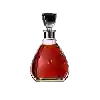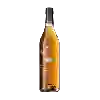
Domaine Vial MagnèresCuvée Bernard Sapéras Banyuls Ambré
This wine generally goes well with poultry, rich fish (salmon, tuna etc) or shellfish.
Food and wine pairings with Cuvée Bernard Sapéras Banyuls Ambré
Pairings that work perfectly with Cuvée Bernard Sapéras Banyuls Ambré
Original food and wine pairings with Cuvée Bernard Sapéras Banyuls Ambré
The Cuvée Bernard Sapéras Banyuls Ambré of Domaine Vial Magnères matches generally quite well with dishes of rich fish (salmon, tuna etc), shellfish or poultry such as recipes of salmon and spinach lasagna, squid from the mouth of the cavado river (portugal) or keftas tajine with eggs.
Details and technical informations about Domaine Vial Magnères's Cuvée Bernard Sapéras Banyuls Ambré.
Discover the grape variety: Prior
Interspecific cross between Freiburg 4-61 (23-416 Joannès-Seyve x pinot noir) and Bronner made in 1987 by Norbert Becker of the Freiburg Research Institute in Germany. It has the particularity of having only one gene for resistance to mildew and powdery mildew. It can be found in Germany, but also in Switzerland, Belgium, ... and in France.
Last vintages of this wine
The best vintages of Cuvée Bernard Sapéras Banyuls Ambré from Domaine Vial Magnères are 2016
Informations about the Domaine Vial Magnères
The Domaine Vial Magnères is one of of the world's greatest estates. It offers 18 wines for sale in the of Banyuls to come and discover on site or to buy online.
The wine region of Banyuls
Banyuls wines come from the South-eastern Part of Roussillon, in the south of France, in the lower Pyrenees, a few kilometres from the Spanish border. These naturally Sweet wines are consumed both as an aperitif and as a dessert. They come in a wide range of hues, from GoldenGreen (Banyuls Blanc) to Amber (Banyuls Ambré) to the intense garnet of the standard Banyuls Rouge. Unusually among the natural sweet wines of France, all Banyuls wines are made primarily from Grenache grapes of various colors.
The wine region of Languedoc-Roussillon
Languedoc (formerly Coteaux du Languedoc) is a key appellation used in the Languedoc-Roussillon wine region of southern France. It covers Dry table wines of all three colors (red, white and rosé) from the entire region, but leaves Sweet and Sparkling wines to other more specialized appellations. About 75% of all Languedoc wines are red, with the remaining 25% split roughly down the middle between whites and rosés. The appellation covers most of the Languedoc region and almost a third of all the vineyards in France.
The word of the wine: Arching
A stage in the vegetative cycle of the vine that occurs after the leaves have fallen and is characterized by the drying out of the soft shoots, which are transformed into hard shoots by lignification.














